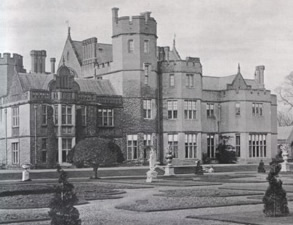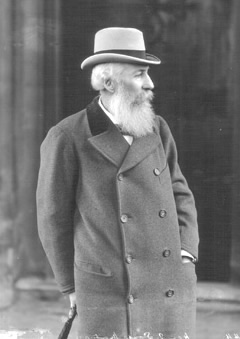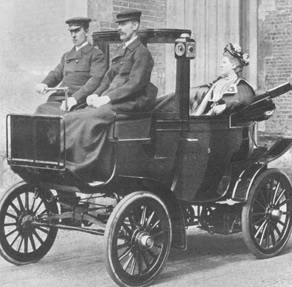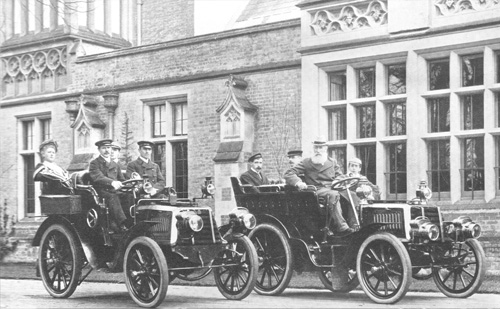
Magazines vaunting the beauty of British country life now included articles on the early motorists. Romantic photographs of Britain’s stately homes were usually published alongside a series of portraits of the resident aristocrat and his motor cars, conveying an invitation for motorised tourists to visit the place. Unintentionally these images have formed for us an excellent record of a country-house life-style, which disappeared almost completely after 1914.
On the other hand, after the first few years of reticence due to its initially frequent breakdown, the possession of a car by a country squire began to be appreciated. In February 1903 The Country Life stated: “It is as an indispensable adjunct of the country house, that the autocar has made its most striking advance in popular favour. Speedy, untiring, ready for instant use night and day, it has completely changed the conditions of life in the country.”
Lord Wimborne, his estate and his stud

Ivor Bertie Guest, 1st Baron Wimborne (1835-1914), portrait by Lafayette taken in the grounds of Canford Manor, Dorset in May 1902.

Lady Wimborne leaving Canford Manor in her “City and Suburban” electric brougham.
The photograph was published in The Car Illustrated on 11 June 1902.

With Lord Wimborne and his son on one Panhard, and Lady Wimborne on another, the family posed for a photograph entitled “Ready to Start.” It is striking how many chauffeurs Lord Wimborne employed to service his stud!
Photograph by Lafayette reproduced in The Car Illustrated on 28 May 1902.
